Interplanetary space is not empty.
Interplanetary Space
Interplanetary space, or the space between the planets, is not empty but is filled with the solar wind, and the Interplanetary Magnetic Field (IMF), as well as cosmic rays, and dust.
Another name for interplanetary space is the Heliosphere, because the space between the planets is the total space which is under the influence of the sun. Just how big the heliosphere is (in AU's), nobody knows.
The space between the planets is different from the space between the stars, or Interstellar Space.
Particles of the solar wind travel through interplanetary space at supersonic speeds. A bow shock helps the solar wind to go around obstacles in interplanetary space such as comets and planetary magnetospheres.
You might also be interested in:
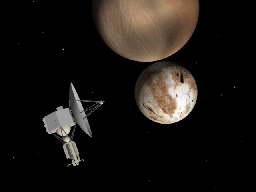
AU stands for Astronomical Units. It is a useful way to measure the distances in interplanetary space. It is the distance between the Earth and the Sun, which is about 93 million miles. For reference,
...more
The solar wind is formed as the Sun's top layer blows off into space, carrying magnetic fields still attached to the Sun. Gusts form in the solar wind associated with violent events on the Sun. Particles
...more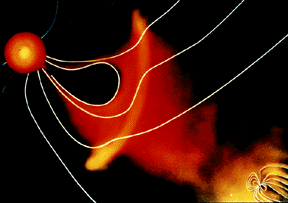
For a planet to be affected by a blob of material being ejected by the sun, the planet must be in the path of the blob, as shown in this picture. The Earth and its magnetosphere are shown in the bottom
...more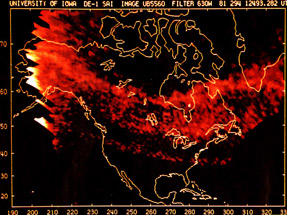
The aurora we are most familiar with is the polar aurora. This is what people are talking about when they say the northern or southern lights. But there are other less-known aurora, such as SAR arcs.
...more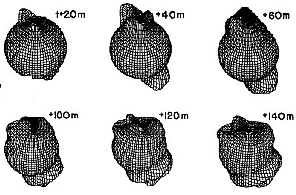
This figure shows the effect of the aurora on the atmosphere. When FAC's enter the atmosphere and create the aurora, they heat the atmosphere suddenly and abruptly. This creates an impulse which travels
...more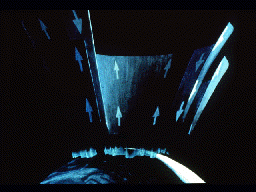
This picture shows the flowing of particles into and out of the auroral zone, as Field-Aligned currents (FAC's) take at short-cut through the atmosphere. Some of the particles entering the auroral zone
...more
This figure shows a series of images of the auroral oval as it expands over the course of about an hour in response to a geomagnetic storm. This is an animation of the auroral oval expanding.
...more















